Data shows that people’s activity level is back to pre-pandemic levels
By: Teresa Filshtein Sonmez & Stella Aslibekyan*
A few months into the COVID-19 pandemic, a consistent narrative has emerged: people were 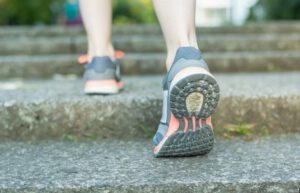
However, the timeframe for most of these studies does not extend past June 2020. Did the decline in activity continue as the work from home trend gained strength and the schools remained closed? Or did people adapt to the new realities of post-COVID-19 life, finding some return to normal in physical exercise?
An Inflection Point
New data collected and analyzed by 23andMe appears to support the second scenario. Following the initial 22 percent drop in daily steps during the first month of the epidemic in the US, the average number of daily steps taken by our research participants went back up to the pre-shelter-in-place levels.
The inflection point occurred in mid-April, approximately one month after the first wave of shelter-in-place orders, and was followed by a gradual and consistent recovery throughout the summer months. Because summer is usually associated with increased physical activity, we compared 2020 data to the same period (February – September) in 2019 (Figure 1).
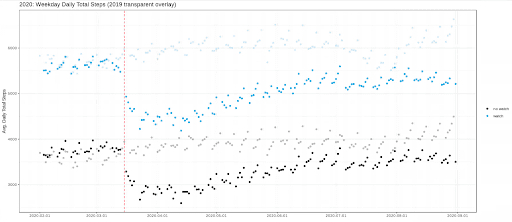
Digging into the Data
Notably, prior to shelter in place orders, physical activity levels were similar between 2019 and 2020, followed by a dramatic divergence in mid-March. After mid-April of 2020, the increase in average daily step counts was steeper compared to the same period in 2019, suggesting that seasonal effects do not completely explain the observed trend. Finally, although 2020 average step counts recovered to pre-pandemic levels by the end of summer, they remained lower than 2019 step counts when seasonality was taken into account.
Because data from wearable devices (e.g. smartwatches) offer a more accurate measurement of physical activity than smartphone-derived step counts, we restricted all subsequent analyses to watch data only. We first stratified our data by sex to examine potential disparities. In our initial analysis, we observed that men and women experienced similar drops in physical activity, although women consistently attained ~1000 fewer daily steps than men. This difference, well-documented by previous studies, persisted in the recovery data as well (Figure 2).
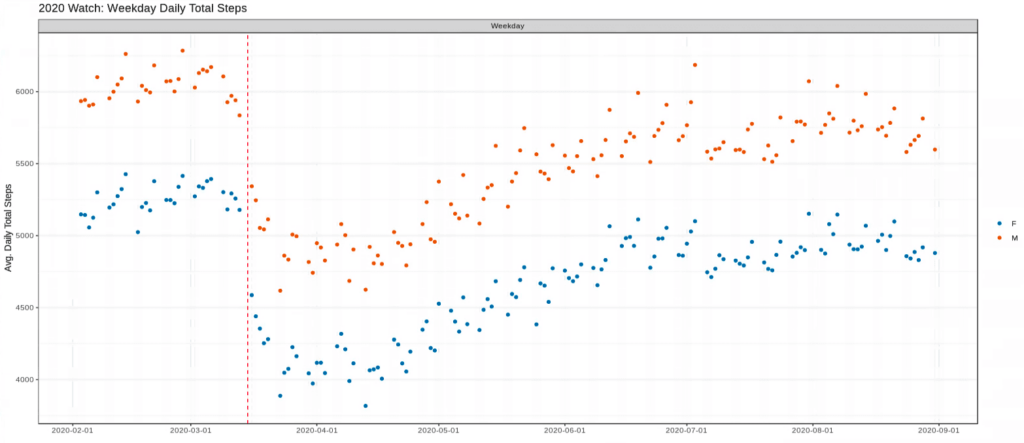
Different Age Groups
Although the effect of COVID-19 in our data did not vary by sex, different age groups exhibited distinct trajectories in both drop and recovery. Initially, the sharpest drop in physical activity was observed among 20 to 30-year-olds, whose step counts pre-pandemic exceeded those of other age groups. By the end of August, however, this group showed an impressive albeit incomplete recovery (Figure 3).
The only group where step counts remained depressed comprised individuals over 70 years of age, highlighting their vulnerability not only to COVID-19 infection but also to the potential negative consequences of prolonged physical inactivity.
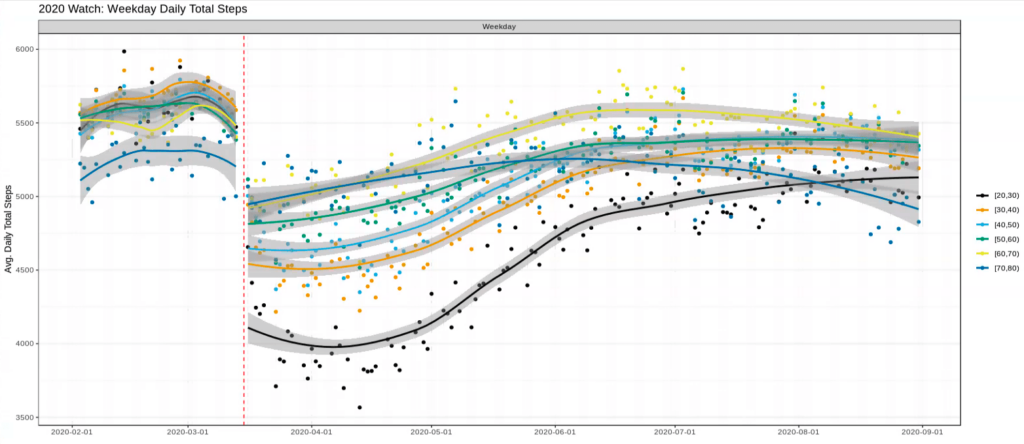
We observed that the difference in walking habits between participants from metropolitan vs. rural areas diminished as the pandemic unfolded (Figure 4a). Pre-shelter in place and consistently with other reports, urban residents walked on average 600 steps/day more than their rural counterparts. Since late March, however, the average difference between the two groups shrank to less than 100 steps/day.
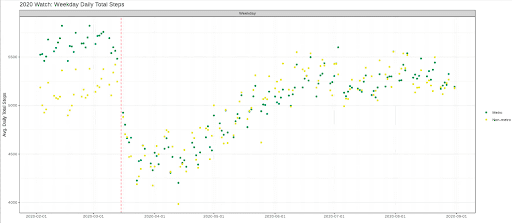
Although rural step counts returned to their pre-COVID-19 levels, a full recovery has so far eluded the urban residents — likely reflecting the lasting changes to workplace and school commutes rather than leisure time physical activity. This hypothesis is supported by data collected on weekends (Figure 4b): unlike in weekday data, step counts recorded on Saturdays and Sundays were consistently higher in metropolitan areas.
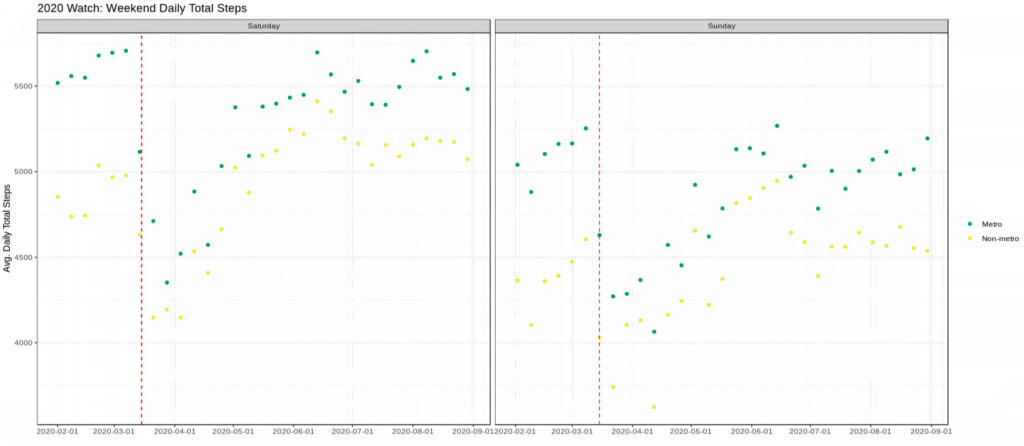
The Power of 23andMe’s Research Model
Enabled by our powerful rapid data collection platform, our analyses tell a story of both resilience and vulnerability in real-time. The overall conclusion is hopeful: even amidst the pandemic-related disruptions, many people are finding ways to increase their daily movement. This finding is especially encouraging in light of the recent studies showing that exercise may be a successful strategy to boost mental health in these challenging times.
Nevertheless, our data also draw attention to groups that are not experiencing these benefits to the same extent: older individuals, rural residents, and women. As we continue to adapt to life with COVID-19, any initiative to promote exercise should consider not only health behaviors but also issues of access and equity to maximize the positive health impact of physical activity.
*23andMe’s COVID-19 study is made possible through the participation of more than a million of our customers who consented to answer survey questions for this research. But this study also involves the hard work of a core team of our health researchers, program/product managers, data scientists, engineers and geneticists. Among them are: Michelle Agee, Amanda Altman, Stella Aslibekyan, Adam Auton, Jess Bielenberg, Adrian Chubb, Daniella Coker, Raffaello d’Amore, Scott Dvorak, Alison Fitch, Scott Hadly, Pooja Jain, Andy Kill, Trung Le, John Matthews, Jey McCreight, Taylor Morrow, Sungmin Park, Jeff Pollard, Anjali Shastri, Janie Shelton, Teresa Filshtein Sonmez, Jason Tan, Lindsey Tran, Cat Weldon, Chelsea Ye, Yiwen Zheng




